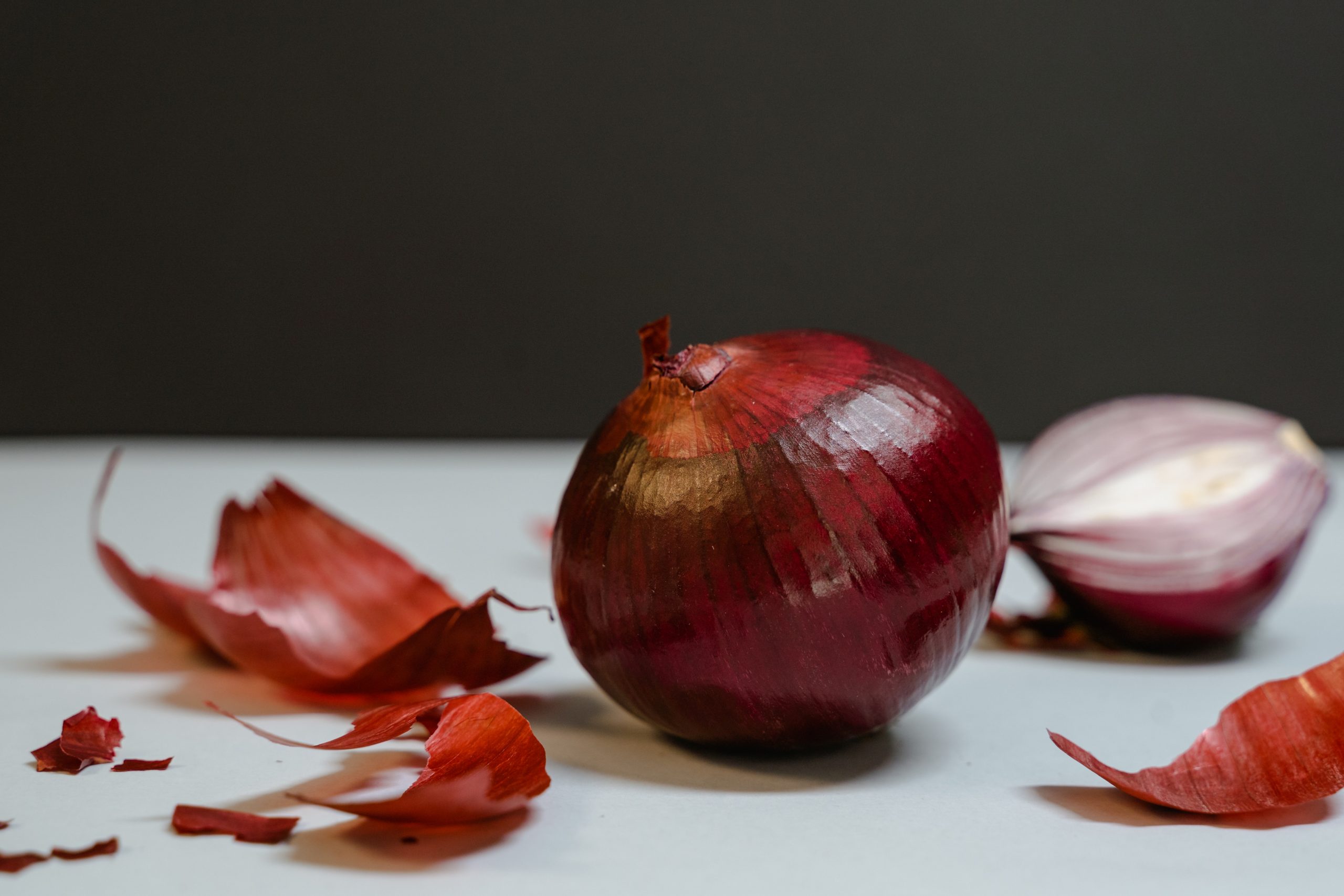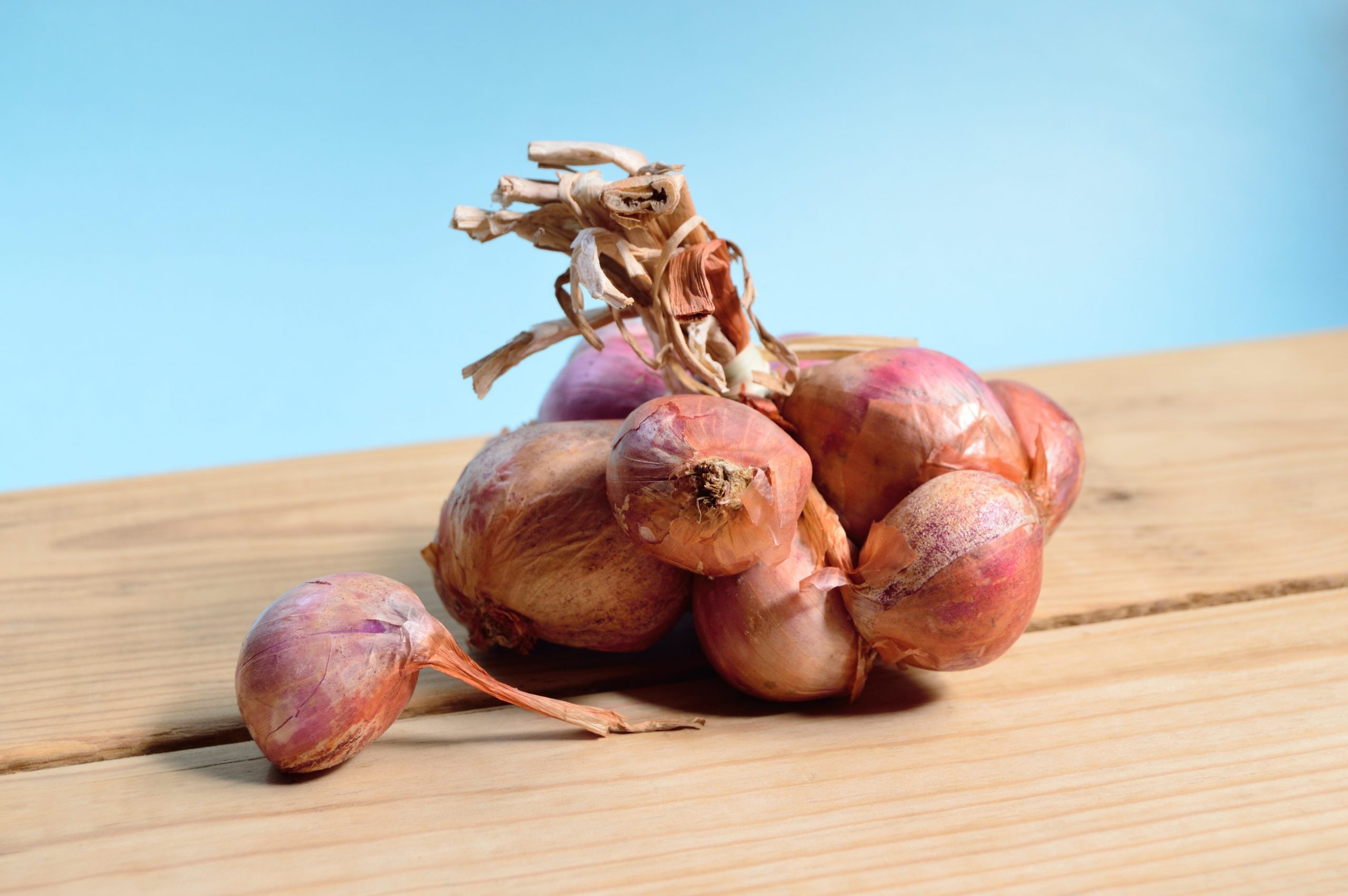Onions are great culinary staples, but they do need to be stored correctly to keep them fresh and tasty. Storing them in the refrigerator can prolong their shelf life, but it may affect their flavor and texture.
There are many ways to determine how long onions will last in your refrigerator. One way is to look for signs of spoilage. Another is to make sure your onions are stored properly. Some common signs of spoilage include mold and mildew. When it comes to the length of time an onion will remain fresh, red onions tend to last longer than yellow onions.

What is an Onion?
The most frequently grown member of the genus Allium is the onion, often known as the bulb onion or common onion (Allium cepa L., from the Latin cepa meaning “onion”). The shallot is a botanical variant of the onion, which, until 2010, was recognized as a distinct species. Its relatives include chive, leek, garlic, and scallion.
Other species in this genus that are grown for food and go by different names like “onions” include the Japanese bunching onion (Allium fistulosum), the tree onion (A. proliferum), and the Canada onion (Allium canadense).
Numerous Allium species are called “wild onions,” but only A. cepa has been cultivated. Although escapes from cultivation have taken root in some areas, its original wild form is unknown. Even though onions are typically biennial or perennial, they are typically maintained annually and harvested during their first growing season.
How Long do Onions Last in the Refrigerator?
Let’s start by examining how long an onion will keep in the vegetable drawer of your refrigerator. Onions should, in general, last for seven to ten days in the refrigerator and six to eight months in the freezer, depending on how they are kept. While chopped onions often stay well in the refrigerator, proper storage is still necessary. The best option is a plastic bag or container that can be closed, but in a hurry, securely wrapping them in plastic wrap or aluminum foil will do. When freezing onions, the same storage guidelines should be followed, so put them in a sealed container or plastic bag before putting them in an upright freezer or chest freezer.
It’s important to remember that once thawed, frozen chopped onions will have a softer texture than fresh onions, so you might wish to save them for use in prepared meals.
How to Freeze Onions?
Chopped Onions
It is unnecessary to thaw frozen, diced, chopped, or caramelized onions before using them. Any chopped, diced, or caramelized onion, including yellow, white, red, shallots, and green onions, can be frozen by following the instructions below.
- Get the onions ready. Onions should be peeled and chopped. On a cutting board, slice, chop, or dice the onions using a sharp knife. (You may also use a food processor to chop the onions.) When chopping onions, keep the root end whole to stop yourself from sobbing. At the end of the chopping operation, the sulfur in the onions’ root ends generates tears that are cut into the root.
- Keep the beneficial elements. Any onion pieces that have decomposed and have mushy or brown patches should be thrown away.
- In freezer bags, put the onions. The chopped onions should be divided into one or more freezer bags. To avoid freezer burn, press the air out of the plastic bags, then spread the onion pieces out evenly to prevent them from adhering together.
- Use an airtight container. Onions can also be kept in freezer-safe containers. Before putting them in a container, arrange thin layers of sliced, chopped, or caramelized onions between sheets of plastic wrap.
- Fill an ice cube tray with onions. Additionally, you can use individual ice cube trays to freeze diced, caramelized, or chopped onions and then store the frozen cubes in freezer bags. The onions are simple to split out for later use using this technique.
Whole Onions
Whole onions can be frozen for use in recipes that call for them. You must wait for the frozen whole onions to defrost before cutting them if a recipe asks for chopped onions. To freeze whole onions, follow these instructions:
- Get the onions ready. Inspect the onions for brown or soft areas, then peel them.
- Make the onions white. Depending on the size of the onion, blanch the whole onion in boiling water for three to seven minutes. By blanching, you can stop an onion’s center from rotting and turning brown.
- Put onions in a bath of freezing water. Place the whole onions in a bath of freezing water. You may either spread them out flat on a baking sheet with plastic wrap or dry them before putting them in a freezer bag or airtight container. For three to six months after being frozen, whole onions will retain their flavor.
How to Thaw and Use Frozen Onions?
When cooking onions, you can add them straight from frozen to the pot or skillet. As-is onion cubes work well in casseroles, sauces, and stews and will defrost during cooking.
Sliced onions should be defrosted in the refrigerator or submerged the frozen bag in a cold water bath for a short period if they are to be added to a baked dish like quiche or savory muffins. They defrost fairly rapidly.
Onions lose their crispness after being frozen, and they become softer. So it might not be a good idea to use them in fresh salads or to consume them uncooked. They work well for any cooking dish you can think of, though, including:
Cold meals, stews, curries, and hot foods
Pasta dishes and savory pies
Egg dishes and omelets
Sauteed vegetables and stir-fries
Sauces for pasta
Just keep it in the refrigerator and allow it to defrost to thaw gradually. Alternatively, rip off a piece and drop it into the pan. While cooking, let it defrost.
What are the Different Types of Onions?
Brown onions, red or purple onions, and white onions are the three main types of large onions.
Brown onions are ideal for use in French onion soup because they are sweeter than other sorts and take on a rich brown hue when caramelized.
Red onions are renowned for their intense flavor and purple layers of skin. They are popular in Asian cookery and frequently used raw in salads and on the grill.
White onions have a sweeter flavor when sauteed and a gentler golden hue when cooked.
Although they are often cooked, onions can be utilized in various ways. They can be used in various ways, including raw in salads and salsas, pickled, crumbed and fried, roasted, sliced, and used to stir-fries, curries, omelets, casseroles, pie fillings, quiche, stew, and even made into marmalade.
In dishes like soup, filled, and caramelized onion tarts, onions can be the star component.
How to Tell Onions are Gone Bad?
Here are a few quick and easy tests to determine whether chopped onions are rotten:
Checking the color and firmness of the flesh is the best way to see if your chopped onions are incorrect. Throw away any onions with blemishes, soft spots, or an offensive odor. Any of these onions are typically good for a week, but a few days after cutting them, they are likely to go bad.
The next way to check if your chopped onions are incorrect is to see if they have grown slime. This slime indicates that fungi have already grown inside the onion after feeding on it.
The consumption of such onions may increase your risk of infection, hypersensitivity, and irritation.
It’s best to stay away from them completely, but it doesn’t mean you shouldn’t eat them.
You should examine the texture of the onion in addition to the smell. If there are any mushy patches in a chopped onion, it’s rotten; they should be smooth and firm.
A solid and smooth onion is also ideal. When onion is too old and has begun to rot, it will have a spongy feel and a foul scent. You should throw away the onions right away if you see any of these symptoms.
A sprout, a soft spot, or brown or black patches should not be on the onion’s surface. Furthermore, it shouldn’t be soft or damaged.
What are the Downsides of Consuming Onions?
may Make IBS Symptoms Worse
10-15% of Americans suffer from irritable bowel syndrome (IBS), a common disorder in our country. Bloating, abdominal pain, cramps, gas, generalized weakness, and irregular bowel movements ranging from constipation to diarrhea are some of its symptoms.
A multimodal strategy is utilized to treat IBS and symptoms to enhance the quality of life. A major element is dietary modifications.
Foods are not thought to cause IBS, although they can cause its symptoms. Consequently, a low FODMAP diet has become a popular evidence-based therapy.
Some People Might have Allergies
When your immune system reacts negatively to particular dietary proteins, food allergies can develop. Your skin, intestines, heart, respiratory system, and neurological system can all be impacted by this immune response.
For children and adults, the most typical food allergies are cow’s milk, eggs, peanuts, fish, shellfish, tree nuts, soy, and wheat. Additionally, individuals frequently have allergies to fruits and vegetables.
Onion allergies have been documented in a few investigations. Along with garlic, asparagus, and leeks, onions are flowering plants in the Liliaceae family.
Can Make Eyes Itch
You’ve probably had your eyes sting while cutting onions and had them start to tear up.
Lachrymatory factor (LF), a sulfur metabolite produced by plants in the Allium genus, serves as a chemical barrier against animals and microorganisms.
LF is an easily evaporating chemical since it is volatile. When onion tissue is disturbed, such as when you chop it, a sequence of enzymatic events causes it to be released.
Reference: Influence of Nitrogen and Sulfur Fertilization on the Alliin Content of Onions and Garlic
Garlic (Allium sativum L.) and onions (Allium cepa L.), two of the earliest crops to be grown, have long been used in folk medicine. The specific secondary metabolites of Allium species like onions, shallots, garlic, leeks, and chives that cause taste and sharpness and are a criterion for pharmaceutical quality are called alliins (cysteine sulfoxides). For many crops, including oilseed rape, mustard, nasturtium, and allium species, the impact of the S nutritional status on the concentration of secondary S-containing metabolites was demonstrated. This study set out to determine how the S and nitrogen (N) supply affected the alliin content of onion and garlic and to assess the implications for crop quality.
Conclusion
You can also store onions in the freezer. But you should make sure to chop or slice them before freezing. They need to be airtight to prevent moisture from affecting their flavor. It is best to store them in heavy-duty freezer bags. If you use a plastic bag, the moisture from the bag can affect the flavor of the onion.
In the refrigerator, unpeeled onions can last up to four weeks. Chopped or sliced onions can stay fresh for about a week. Whole onions are good for about a month. If you want to store your onions for longer, you can try storing them in a cool, dark place. The ideal temperature for storage is 45 to 55 degrees.

